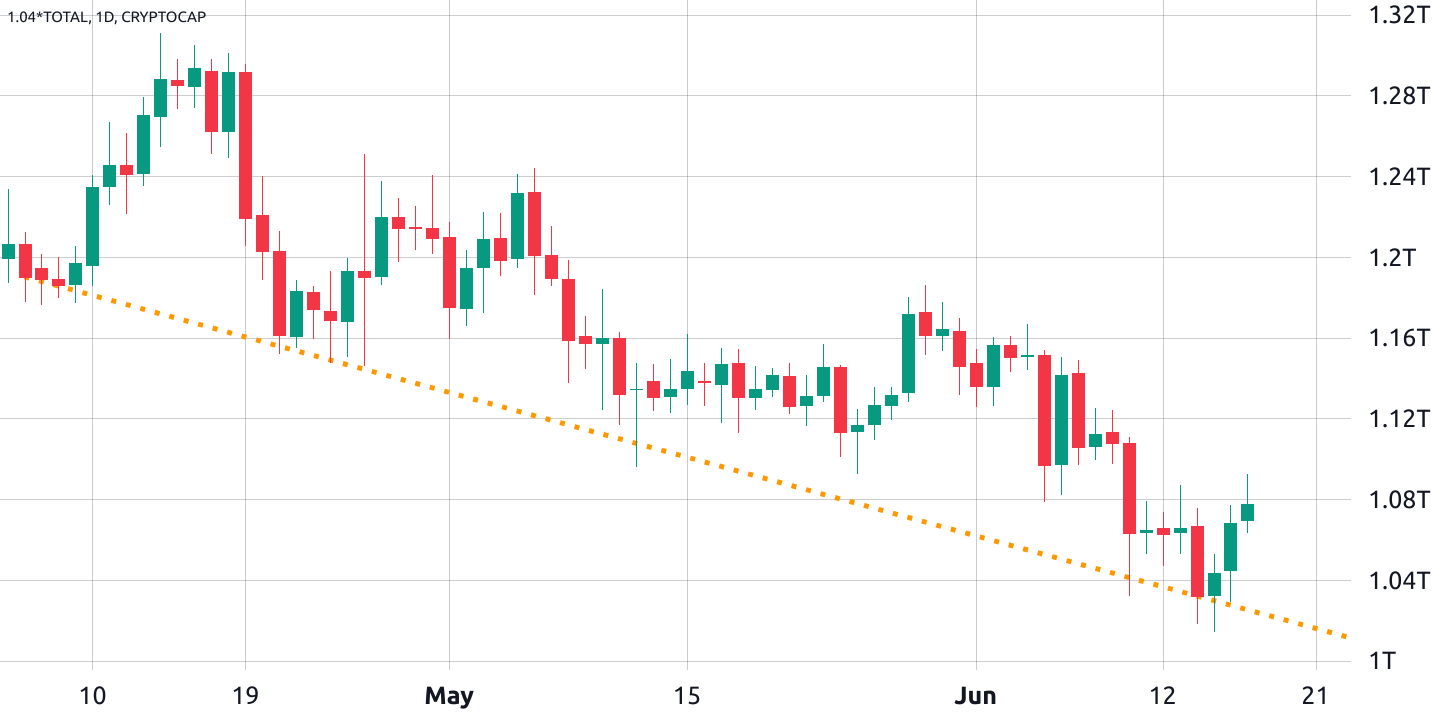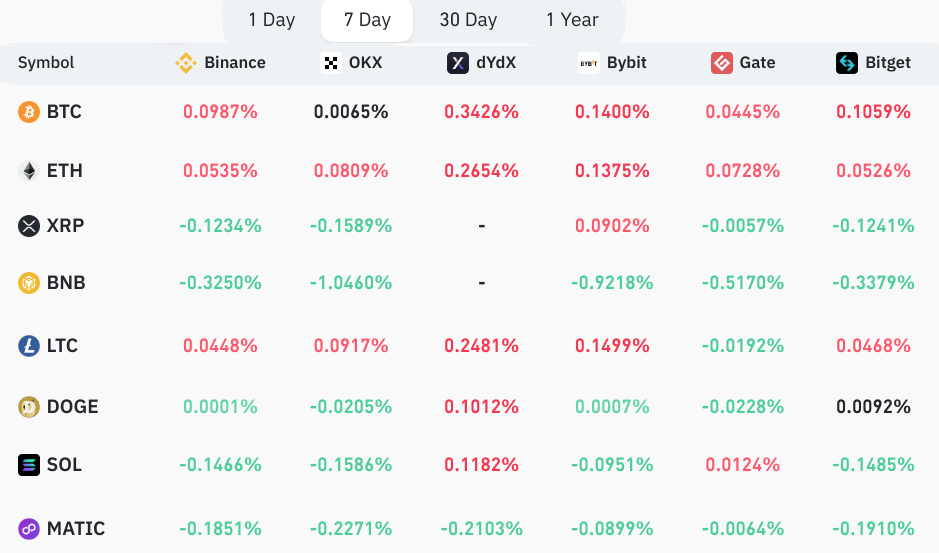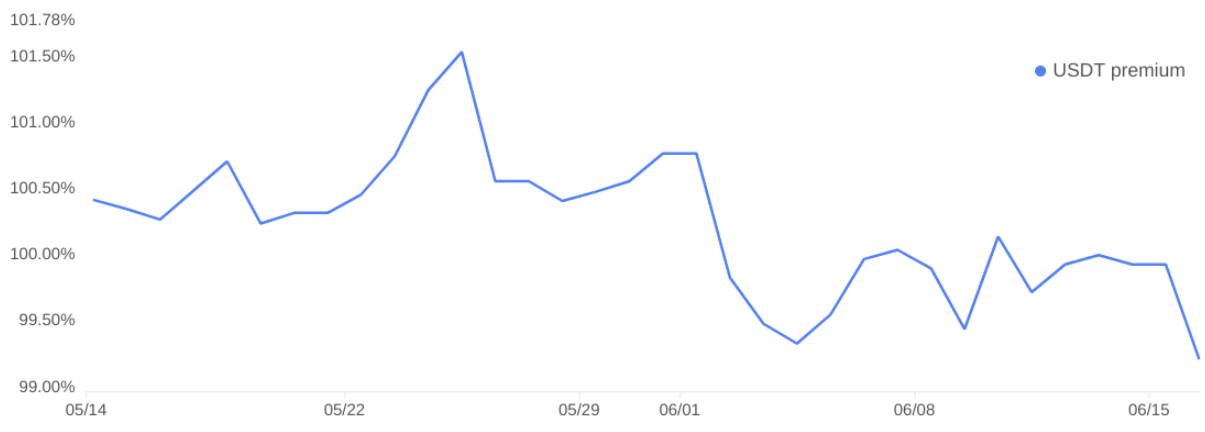Tento príspevok bol pôvodne publikovaný na stránke https://cointelegraph.com/news/cryptocurrency-market-break-10-week-losing-streak a autorom článku je Cointelegraph By Marcel Pechman. Tento článok je iba kópia originálneho článku.
https://images.cointelegraph.com/cdn-cgi/image/format=auto,onerror=redirect,quality=90,width=840/https://s3.cointelegraph.com/uploads/2023-06/b808a860-3b71-4443-8fd7-b4fa8a3ecf18.jpgRegulatory uncertainty and the lack of transparency on stablecoins caused crypto markets to trade at its lowest levels in 3 months.

Market Analysis
The cryptocurrency total market capitalization fell to $1.02 trillion on June 15, its lowest level in three months. But while the derivatives market’s resilience and end-of-week price gains amid uncertainty in stablecoins’ reserves provides hope for bulls, it might be too soon to celebrate.
Crypto regulatory conditions deteriorate
The past few week have seen a bearish trend fueled by regulatory uncertainty. Last week, Bitcoin (BTC) and BNB saw 2.5% gains, but XRP dropped 5.2%, and Ether (ETH) traded down 0.7%.

Notice that the 10-week long pattern has tested the support level in multiple instances, signaling that bulls will have a hard time breaking from the bearish trend while regulatory conditions have worsened across the globe.
For starters, New York-based derivatives exchange Bakkt is delisting Solana (SOL), Polygon (MATIC) and Cardano (ADA) due to recent regulatory developments in the United States. The decision follows last week’s lawsuits brought by the Securities and Exchange Commission (SEC) against crypto exchanges Binance and Coinbase.
Related: Why is the crypto market up today?
More recently, on June 16, Binance has been the subject of a preliminary investigation in France since February 2022. The France-based arm of the crypto exchange reportedly failed to obtain an operating license and illegally offered its services to French customers. Furthermore, the exchange lacked Know-Your-Customer procedures, according to regulators.
Also on June 16, Binance announced its departure from the Netherlands, with users being asked to withdraw their funds as soon as possible. The decision to exit the Dutch market occurred after the exchange failed to obtain a virtual asset service provider (VASP) license.
Despite the worsening crypto regulatory environment, two derivatives metrics indicate that bulls are not yet throwing in the towel. Nevertheless, they’ll likely have a hard time breaking the bearish price formation to the upside.
Derivatives show balanced demand for BTC, ETH leverage
Perpetual contracts, also known as inverse swaps, have an embedded rate that is usually charged every eight hours.
A positive funding rate indicates that longs (buyers) demand more leverage. Still, the opposite situation occurs when shorts (sellers) require additional leverage, causing the funding rate to turn negative.

The seven-day funding rate for BTC and ETH is neutral, indicating balanced demand from leveraged longs (buyers) and shorts (sellers) using perpetual futures contracts.
BNB was the only exception, with traders paying up to 1% per week for short bets, which can be explained by the added risks after regulatory scrutiny over the Binance exchange.
Tether FUD hurts USDT premium
The Tether (USDT) premium is a good gauge of China-based crypto retail trader demand. It measures the difference between China-based peer-to-peer trades and the United States dollar.
Excessive buying demand tends to pressure the indicator above fair value at 100%, and during bearish markets, Tether’s market offer is flooded, causing a 2% or higher discount.

The Tether premium in Asian markets fell to 99.2% after being flat since June 6, indicating moderate discomfort. Reports on June 16 on Tether reserves’ exposure to Chinese debt markets could have been the cause.
Potential market triggers
Derivatives metrics displayed resilience considering the strong regulatory activity aimed at crypto exchanges. Consequently, bears are yet to prove their strength if they intend to push crypto below the $1 trillion mark.
Related: 3 key Ether price metrics point to growing resistance at the $1,750 level
Despite the most recent bounce from the support level, any gains above $1.12 trillion in capitalization (up 10% from the $1.02 trillion low) will likely be short-lived over the next few months.
Therefore, with the Bitcoin halving still over 300 days away, the bulls are currently pinning their hopes on a Bitcoin ETF approval and/or a Federal Reserve rate cut as potential bull market catalysts.
This article does not contain investment advice or recommendations. Every investment and trading move involves risk, and readers should conduct their own research when making a decision.
This article is for general information purposes and is not intended to be and should not be taken as legal or investment advice. The views, thoughts, and opinions expressed here are the author’s alone and do not necessarily reflect or represent the views and opinions of Cointelegraph.



